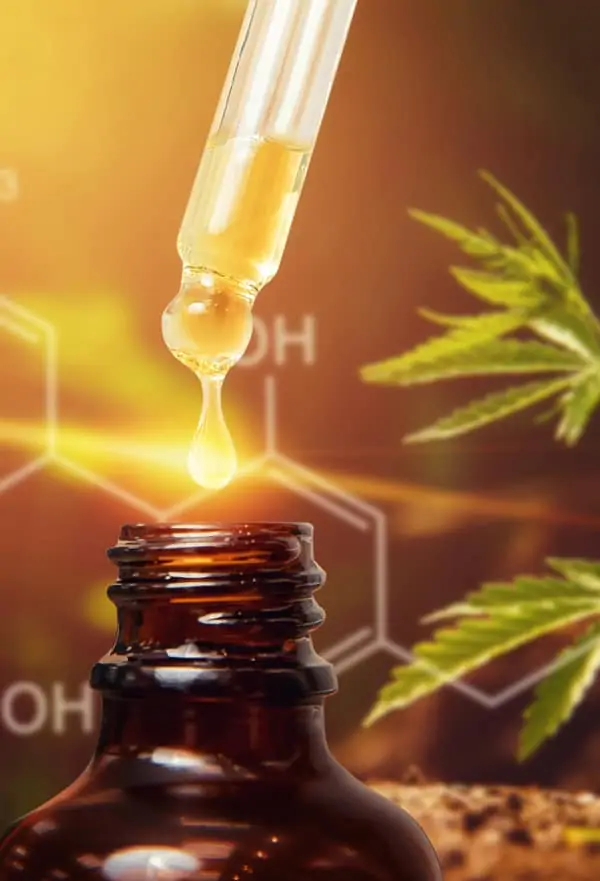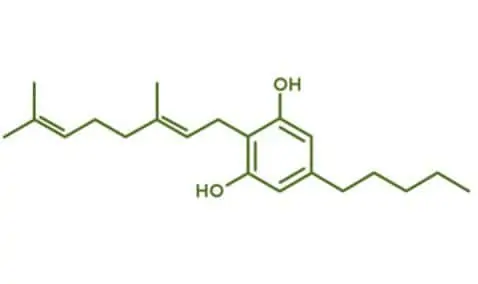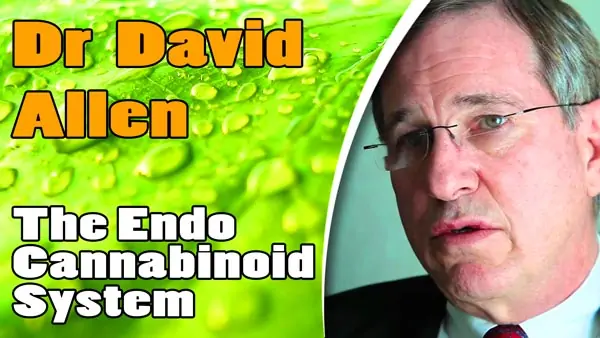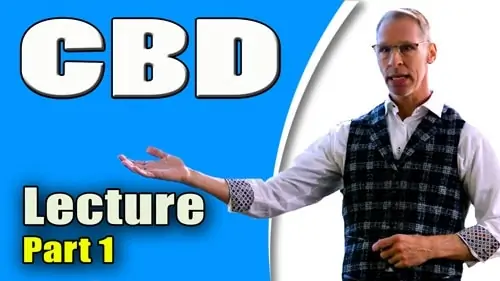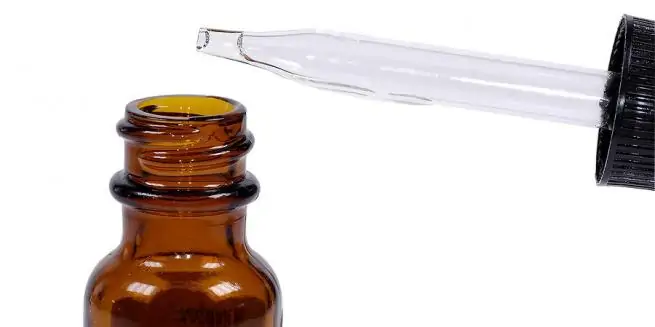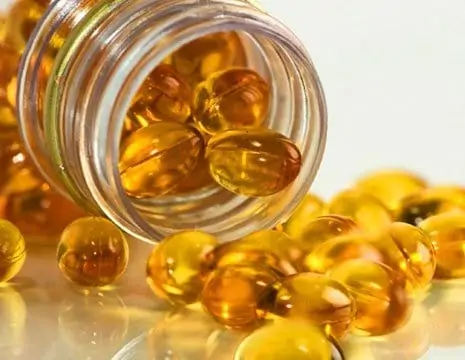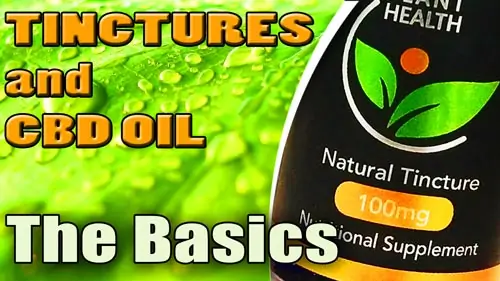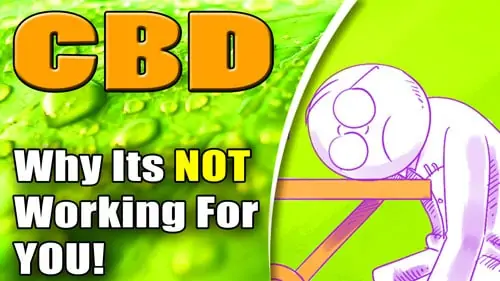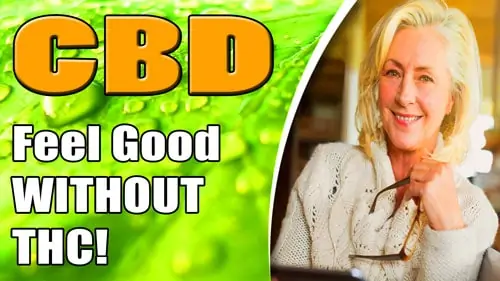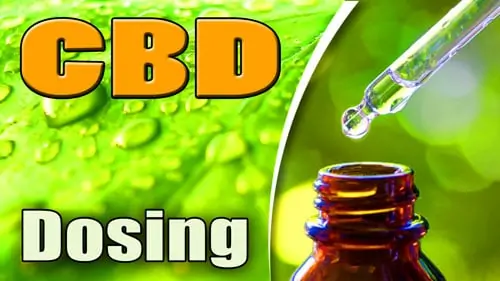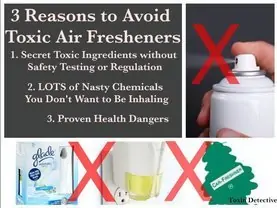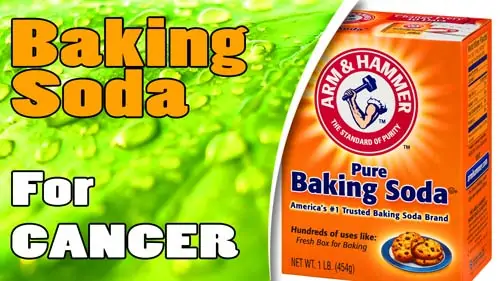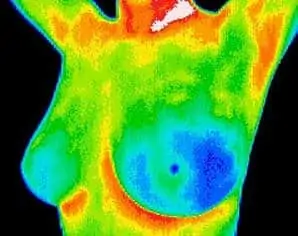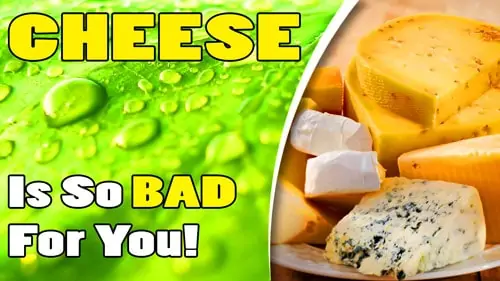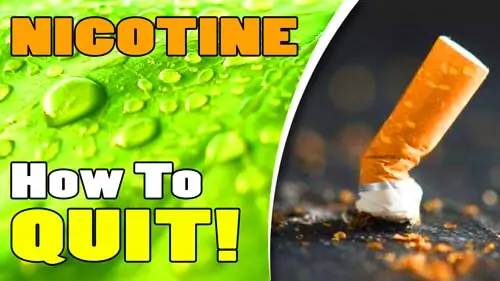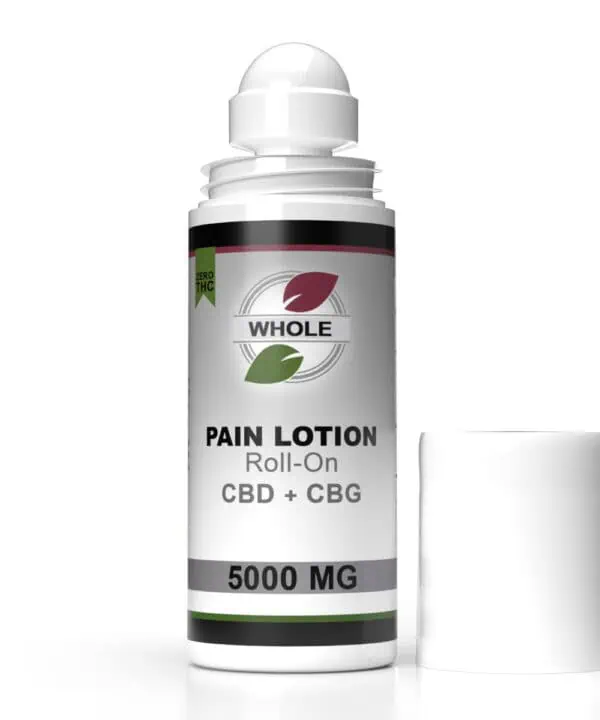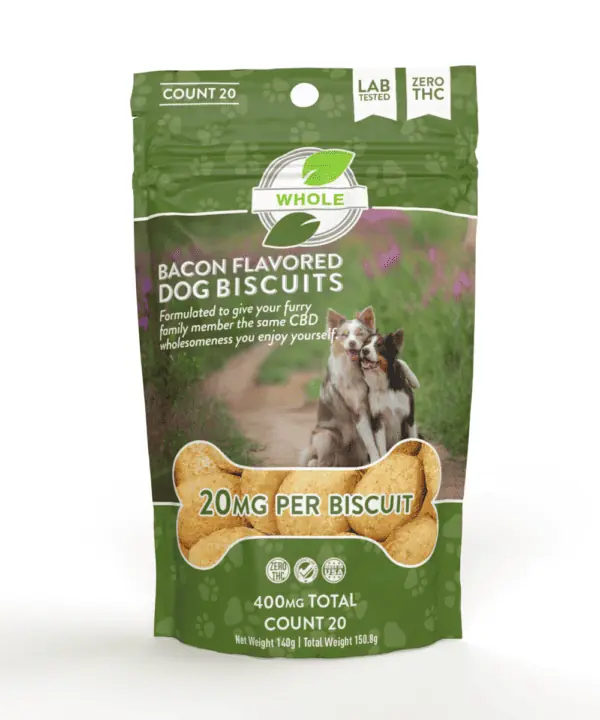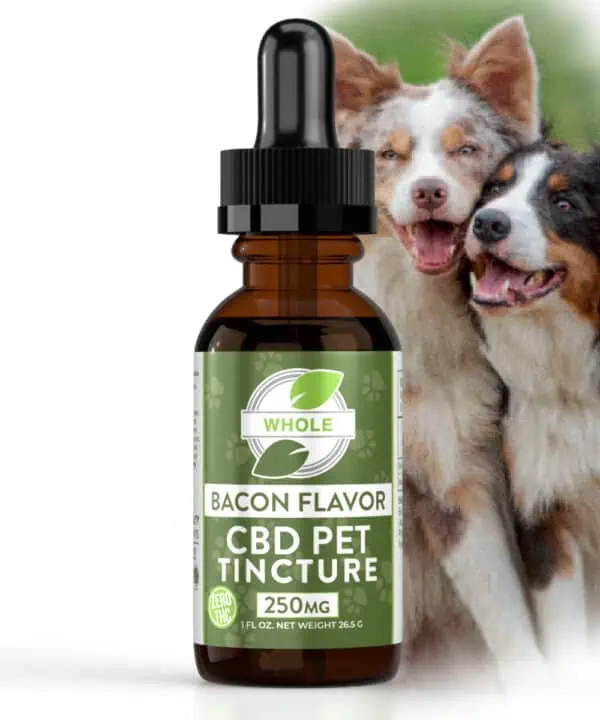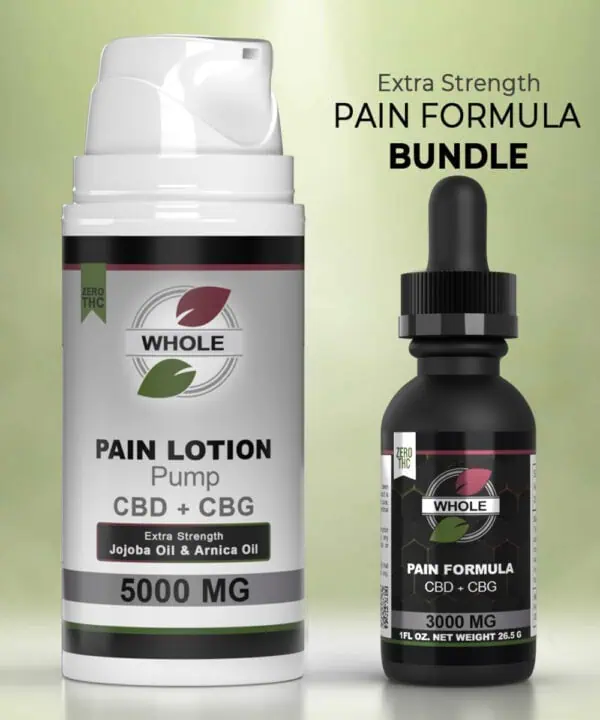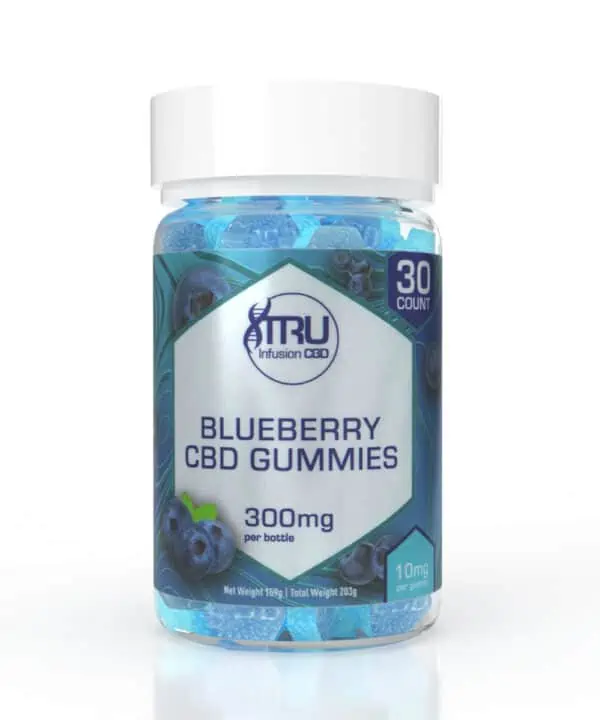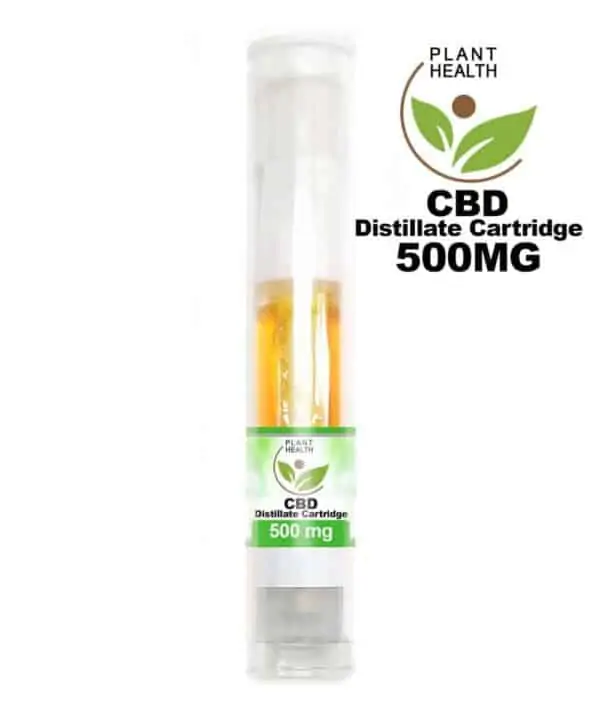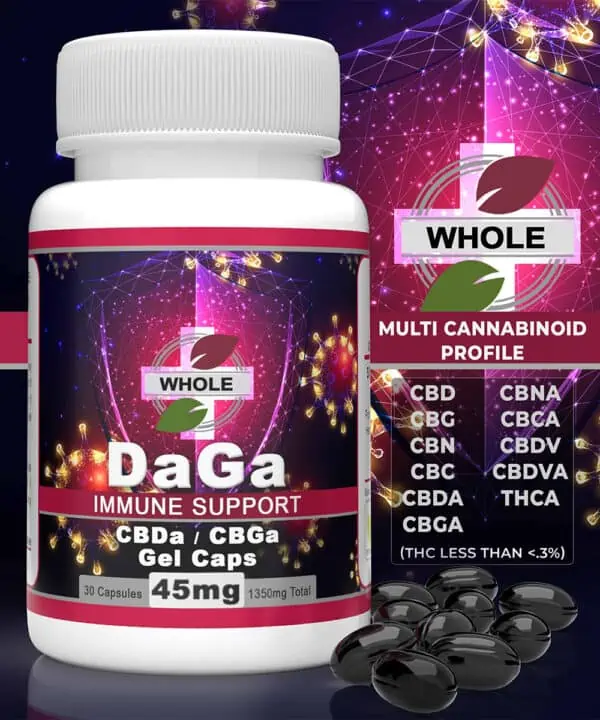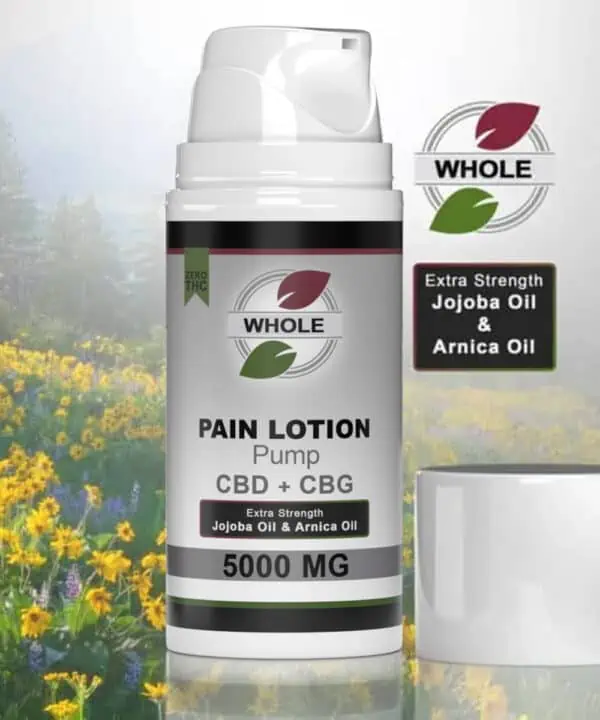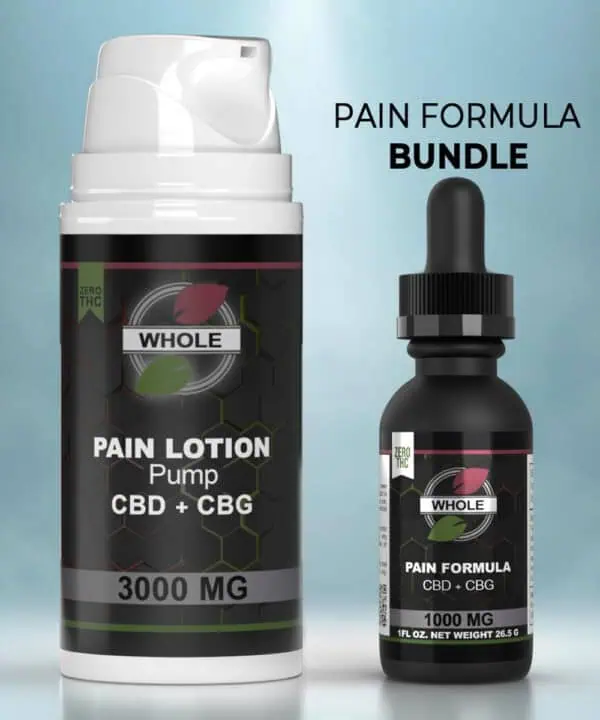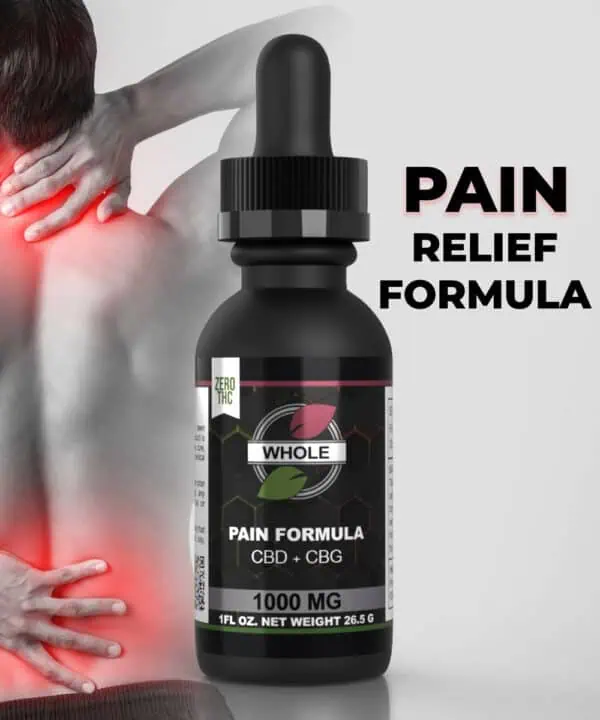azWHOLEistic
CBD KNOWLEDGE CENTER
Our CBD Knowledge Center covers a wide range of information regarding CBD, and Natural Plant Based Phyto-Nutrients. azWHOLEistic helps educate our clients on proven methods of detoxification and healing. The CBD Knowledge Center is a great starting point for anyone considering the use of CBD or other Phyto-Nutrients. You will find factual information, from reliable sources that can be trusted. New information is added on a weekly basis, so be sure to stop in often to keep yourself up-to-date on education, news, legislation, and more!
CBD Knowledge Center
Cannabinoid Education
Did you know that food allergies can be as bad as drug allergies? Food allergies are even more difficult to prevent.
In the video below, we discuss the different blood types, the best foods to eat for your blood type, and how to avoid food allergies. What would you pay to be healthy? Learning to balance your body, mind and spirit will save you thousands in doctors visits, co-pays and prescription medications!
It’s up to you…

Your Blood Type matters when it comes to many things such as Food Sensitivities. New data shows it matters for COVID-19 contraction also.
Cannabidiol – CBD
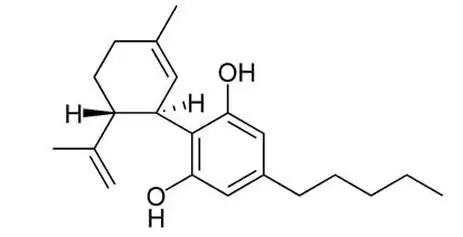
Found in the leaves and stock of the Hemp plants, CBD or Cannabidiol is the most powerful cannabinoid for modulating homeostasis in the human body. Our immune system makes its own cannabinoids but many of us are deficient and supplementing this compound influences a wide range of chemical processes throughout the body.
All “mammals” may benefit from a regiment of CBD, and at the correct dose, may potentially see overall health benefits and mental well being.
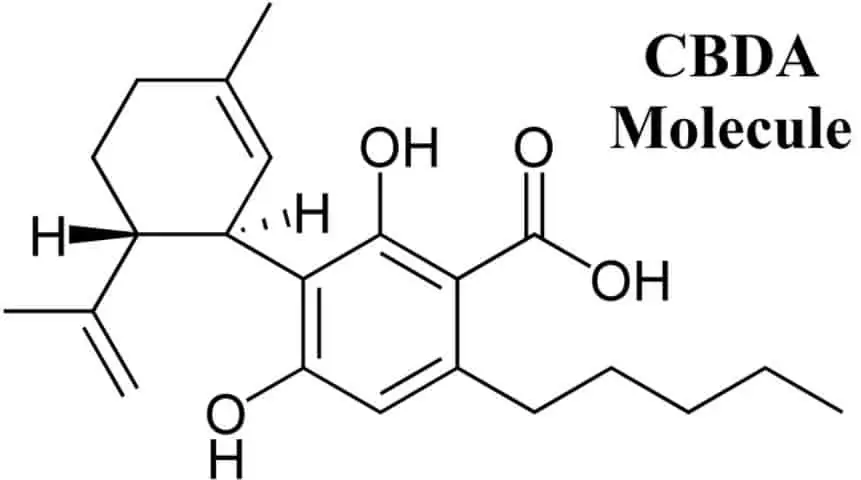
Many conditions that may potentially respond well to CBD may also respond to CBDA. Though, CBDA is broken down and used by the body differently than its “activated” counterpart. CBDA also may not be as strong as CBD, which is why the dosages of CBDA are typically much higher than CBD. By some arguments, activated CBD may be more bioavailable than CBDA.
Cannabigerol – CBG
CBG is a non-psychoactive cannabinoid, meaning it doesn’t produce the “highs” that are synonymous with THC. Because it is present in low levels (usually less than 1%), CBG is considered a minor cannabinoid. Amazingly, however, THC and CBD start out as CBG—it’s the chemical parent of THC and CBD.
Specific enzymes in the plant break CBGA down and “direct” it toward one of the three lines. The acids are exposed to ultraviolet light or heat, and voila, they become the cannabinoids we know: THC and CBD. In most strains, CBGA is immediately converted to either THCA or CBDA. Thus, more THC means less CBG and CBD (and vice versa) by nature of how these compounds are synthesized.
More about CBG HERE
Cannabidinol – CBN
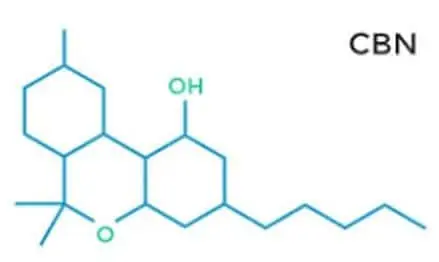
Its name may bear striking resemblance to CBD, but cannabinol, or CBN, offers a unique profile of effects and benefits that have researchers clamoring for more scientific investigation. CBN’s most pronounced, characterizing attribute is its sedative effect.
Cannabidivarin – CBDV
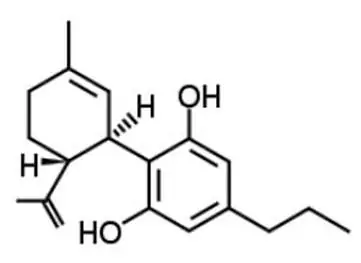
CBDV is the precursor to another compound of interest, THCV. THCV is currently being studied as a potential treatment for diabetes. Research suggests that CBDV transforms into THCV under acidic conditions.
CBDV is also not very abundant, which can make the compound difficult to come by. Still, it may be worthwhile for growers and breeders to experiment with creating chemovars (cultivars that produce specific chemical compounds) that contain higher levels of CBDV.
World Health Organization CANNABIDIOL (CBD) Pre-Review Report
Agenda Item 5.2 Summary:
Cannabidiol (CBD) is one of the naturally occurring cannabinoids found in cannabis plants. It is a 21-carbon terpenophenolic compound which is formed following decarboxylation from a cannabidiolic acid precursor, although it can also be produced synthetically. CBD can be converted to tetrahydrocannabinol (THC) under experimental conditions;however, this does not appear to occur to any significant effect in patients undergoing CBD treatment.
In experimental models of abuse liability, CBD appears to have little effect on conditioned place preference or intracranial self-stimulation. In an animal drug discrimination model CBD failed to substitute for THC. In humans, CBD exhibits no effects indicative of any abuse or dependence potential.
CBD has been demonstrated as an effective treatment of epilepsy in several clinical trials, with one pure CBD product (Epidiolex®). There is also preliminary evidence that CBD may be a useful treatment for a number of other medical conditions. There is unsanctioned medical use of CBD based products with oils, supplements, gums, and high concentration extracts available online for the treatment of many ailments.
CBD is generally well tolerated with a good safety profile. Reported adverse effects may be as a result of drug-drug interactions between CBD and patients’ existing medications.
Several countries have modified their national controls to accommodate CBD as a medicinal product.
To date, there is no evidence of recreational use of CBD or any public health related problems associated with the use of pure CBD.
VIEW THE FULL REPORT HERE From the World Health Organization’s Website
Did You Know?
CBD is patented by The US Department of Health and Human Services
Surgeon Dr. David Allen talks about CBD and the Endo Cannabinoid System.
In this video, learn how CBD upregulates genes to allow the immune system to function more optimally.
CBD Tinctures
Tinctures are the most common usage of CBD on the market. The ease of use is key especially at first to be able to determine your personal dosage. Oils allow you to adjust your dose easily by increasing the amount per dropper. The suspension is also important. We have CBD in MCT oil, Grape seed Oil as well as Hemp Seed Oil. Some have natural flavoring like citrus or Peppermint which makes it more enjoyable to consume for those who need flavor.
CBD Concentrates
CBD concentrates typically contain the strongest dosage of CBD compared to any other type of products. It can contain up to 10 times the concentration compared to other CBD products. In comparison to tinctures, concentrates may come in a syringe or just a jar with raw Powder. Concentrates can be ingested orally, added to Yogurt, apple sauce etc,
CBD Capsules
Using capsules is convenient, but you should know your dosage first as you cannot cut a gel cap in half. It is much easier to take than tinctures or concentrates. Additionally, if you take vitamins (or any other supplements), you can just add the CBD capsule to your daily supplement regimen.
CBD Topicals
More brands have started to add CBD in topicals, such as lotions, salves, and lip balms. Few people realize that what you put “on” your skin does soak into your blood stream. Especially when you incorporate natural emollients that help to open the dermis of the skin. The CBD molecule does go into the blood stream even when applied topically.
CBD Sprays
CBD sprays are very desirable as they can be sprayed into the oral cavity and absorb from the tongue and cheeks which is a larger surface area than sublingual ( under the tongue ). Sprays are a favorite for those on the go and DO NOT want to inhale their CBD into their lungs.
CBD Inhalation
Inhalation, also referred as nebulizing is the fastest delivery to the brain. When you inhale CBD into your lungs, it by-passes the Blood Brain Barrier so it is a direct absorption to the brain. The advantage of this method is key for many people for several reasons.
1. For anyone who requires 100 mg or more of CBD per day, inhalation will typically cost less.
2. We can never predict how much CBD is being absorbed in the blood when taken orally. With inhalation, we know that more material is typically absorbed due to the direct delivery to the lungs.
3. Oils can be absorbed prior to actual digestion, but capsules & edibles take longer as they absorb in the lower intestines so there is some loss during this process.
Broad Spectrum terminology was first used by us in 2018 as a new term. The hemp derived CBD contain smaller amounts of naturally occurring tetrahydrocannabinol ( THC ) which makes you high.
OUR LABS REMOVE ALL TRACES OF THC
When hemp is grown, it can be used in a whole host of products, including food, clothing, lubricants, fuels, skin and body care items – each part of the hemp plant has unique properties. In fact, hemp seed oil contains ZERO CBD. It is all the other components of the plant that contain CBD. There are many ways to extract the oil. In some instances, the oil may be extracted using chemical solvents like butane or hexane. But these harsh chemicals are neurotic and can inhibit the function of your immune system. Fortunately, there are safer ways, like CO2 and other clean extraction processes ( which all our labs utilize ) to obtain the oil from the Hemp plant and be sure there is zero detectable THC.
FULL SPECTRUM OILS contain some THC while BROAD SPECTRUM OILS do not contain any THC.
The super critical CO2 method uses carbon dioxide under high pressure and extremely low temperatures to isolate, preserve, and maintain the purity of the medicinal oil and when done properly the end product is safe, potent, and free of chlorophyll and other harmful chemicals.
WE ARE VERY PROUD OF OUR “PLANT HEALTH” BROAD SPECTRUM LINE
Complete with CBD, CBDV and CBDVa.
The size of the particle has a direct effect on the speed of the molecule to be assimilated into the blood stream. Since 2014 when we first began to study and understand their utility, CBD extracts and Hemp Oils have become vital to peoples health supplements.
Nano Coconut CBD oil contains natural saturated fats. To date, there are over 1,500 studies showing coconut oil to be one of the healthiest foods. Research has finally uncovered the secrets to this high quality food: namely healthy fats called medium-chain fatty acids (MCFAs). Around 62 percent of the oils in coconut are made up of these three healthy fatty acids, and 91 percent of the fat in coconut oil is healthy saturated fat. This fat composition makes it one of the most beneficial fats.
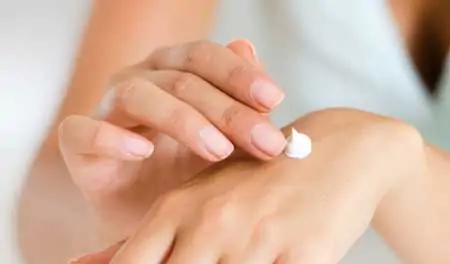
TOPICALS are used directly on an area of skin, and can be used on an as needed basis. Select a product based on ONLY natural emollients with or without Menthol and then use as needed.

Inhalation is the FASTEST way to deliver cannabinoids to the brain. For a host of neurological conditions. You may experience a range of benefits with these materials. Click below to view our inhalation products.
Delta 8 is an Analog of THC. Delta 8 binds to the G Protein coupled receptor CB1 located in the central nervous system and exhibits a lower psychotropic potency than Delta 9 THC which is the primary form of THC.
Both Delta 8 and Delta 9 contain “double bonds” in that region of the carbon atoms chain = Delta 8 bonds in the 8th chain while delta 9 bonds in the 9th chain.
Delta 8 is chemically different from Delta 9 by only a few atomic bonds. Delta 8 only exists in small percentages in the cannabis and Hemp plants.
While we wish we could provide the public with a mathematical CBD dosage calculator, it isn’t quite that simple – EVERYONE IS DIFFERENT and each person’s metabolism is unique.
With these facts in mind, most people who are new to CBD will begin their journey by starting with the minimal suggested CBD dosage ( 5 mg to 10 mg ) on any product, then gradually increasing the dose until they achieve the desired results.
All of azWHOLEistic’s CBD oils come with a FREE dose card download at purchase of any CBD oil.
For more information on CBD Dosing, watch the video below!
Thousands of scientific/medical peer-reviewed studies have been carried out specifically on CBD. Project CBD is a non-profit organization strictly dedicated to documenting the research progress.
You can find a wide range of studies on the ICRS.co website HERE.
Cannabidiol is a 100% natural molecule. Should you experience any unfavorable reactions such as loose stool or light headed, stop taking it or at least “reduce” your dosage as it may be just too much to start.
We suggest people start with 5 to 10 mg per day and “slowly” increase as needed. Each person’s dose is unique to their body. If you experience any Side Effects, it may be caused by something else especially if you are taking any Prescription Medications. It is your responsibility to look up the Side Effects of the Prescriptions medication you are taking as this is likely the reason for any side effect, and consult your Primary Care physician.
Phyto-Nutrients
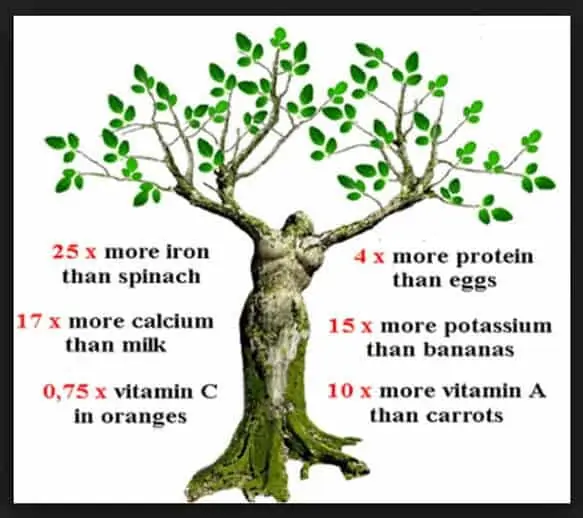
Moringa is a fairly large tree that is native to North India. It goes by a variety of names, such as drumstick tree, horse radish tree, or ben oil tree. Almost all parts of the Moringa tree can be eaten or used as ingredients in traditional herbal medicines. The leaves and pods are commonly eaten in parts of India and Africa.
The leaves are an excellent source of many vitamins and minerals. One cup of fresh, chopped leaves (21 grams) contains the following:
Protein: 2 grams.
Vitamin B6: 19% of the RDA.
Vitamin C: 12% of the RDA.
Iron: 11% of the RDA.
Riboflavin (B2): 11% of the RDA.
Vitamin A (from beta-carotene): 9% of the RDA.
Magnesium: 8% of the RDA.
In Western countries, dried leaves are sold as dietary supplements, in either powder or capsule form. Compared to the leaves, the pods are generally lower in vitamins and minerals. However, they are exceptionally rich in vitamin C. One cup of fresh, sliced pods (100 grams) contains 157% of your daily requirement for vitamin C.
The diets of people in developing nations sometimes lack vitamins, minerals and protein. In these countries, Moringa oleifera can be an important source of many essential nutrients.
Paul Stamets, visionary mycologist extraordinaire, has discovered several new species of mushrooms and pioneers countless techniques in the field of edible and medicinal mushroom cultivation. He has recently achieved remarkable results cleaning up dangerous toxins using “fungal bioremediation” and radically improving soil fertility with mushrooms.
Terpenes and terpenoids are the primary constituents of the essential oils of many types of medicinal plants and flowers. Essential oils are used widely as fragrances and in medicine and alternative medicines such as aromatherapy.
Terpenes are known to interact with THC and CBD, the main active compounds in Hemp. Research is showing that terpenes may actually have effects of their own.
There is NO THC in natural Terpenes.
Guide To Terpenes

Known as the “mushroom of immortality”, Reishi has a long history of use intraditional Chinese medicine where it has been used for over 2000 years to promote rest, relax the mind and enhance vital energy and memory function and support of the respiratory system.
The bioactive Reishi fungus contains important minerals like potassium, calcium, phosphorus, selenium, iron and zinc, as well as all the essential amino acids, especially lysine and leucine. Also present are a variety of polysaccharides and tri-terpenes, which are bioactive compounds with possible beneficial effects on liver health.
There is almost no “detailed” Western medical literature that thoroughly decodes Reishi. Steven S. Gross, PhD, biomedical researcher at Weill Cornell Medical College — and very liberal-minded man — has stated that “the enormous chemical complexity of fungi and plants makes it essentially impossible to confidently ascribe any observed psychoactivity to a single molecular constituent, site of CNS action, molecular mechanism, or signaling pathway.
A few writings confirm that Reishi is exceptionally high in tri-terpenes, a class of compounds that can affect the nervous system through the liver. But even Iris Benzie, Reishi specialist and chair professor of biomedical science in the department of health technology and informatics at Hong Kong Polytechnic University, admits in her Herbal Medicine: Biomolecular and Clinical Aspects that “very little is known about the enzymes and biochemical pathways involved in their biosynthesis.”
Reishi’s effects are gentle and, like all adaptogens, meant to be built up over time and that its immediate effectiveness can be influenced by a few factors, like the physical health and mentality of the consumer.
DETOXIFICATION
It is unreasonable to expect the majority of people to take this information seriously, but what is mentioned below is 100% factual and has a “direct effect” on the health of your cells and your immune system’s ability to prevent disease.
We are literally bathed in toxins every day and worrying will do nothing to stop it. But you do have the ability to limit your exposure to these toxins by being “aware” of them. Limiting toxins has a direct effect on your quality of life and how frequently you visit the doctor and are prescribed prescription drugs. Your state of mind and “stress” is also a factor with how well your immune system functions to remove toxins from your body.
Relaxation and meditation has a direct effect on the body’s chemistry and can keep your immune system strong. Many of these “common” toxins are things that you can’t see, smell or feel. This is why so few people are even aware of them. We don’t realize that we’re being affected until we come down with a chronic condition after years of subtle and often consistent exposure to a combination of these toxins.
This makes it almost impossible to pinpoint a specific environmental toxin as the source of illness, yet when you look at the facts, the increasing numbers of cancers, immune system disorders, neurological problems, chronic fatigue syndrome, allergies and hormonal disturbances that are facing the nation – toxins are obviously part of the equation. Especially when cancer was present in 1 in 35 people in 1970 and today it is 1 in 3. Consider these statistics:
- Approximately 77,000 chemicals are produced in North America
- Over 3,000 chemicals are added to our food supply
- More than 10,000 chemical solvents, emulsifiers and preservatives are used in food processing
- 1,000 new chemicals are introduced each year
Where do all of these chemicals end up? They are absorbed into our groundwater, rivers, lakes and oceans, spewed into our air, and added, quite intentionally, to our food supply. A study in last year’s British Medical Journal estimated that perhaps 75 percent of most cancers are caused by environmental and lifestyle factors, including exposure to chemicals. Another report by the Columbia University School of Public Health, estimated that 95 percent of cancer is caused by diet and environmental toxicity. This is really not surprising when you consider that estimates show most Americans have somewhere between 400 and 800 chemicals stored in their bodies, typically in fat cells. Some of the short and long-term effects of these toxins include:
- Neurological disorders (Parkinson’s, Alzheimer’s, depression, attention deficit disorder, schizophrenia, etc.)
- Cancer, Nutritional deficiencies, Hormonal imbalances, Enzyme dysfunction, Altered metabolism, Reproductive disorders, Fatigue, Headaches, Obesity, Muscle and vision problems, Immune system depression, Allergies/Asthma, Endocrine disorders, Chronic viral infections.

Hello ladies. The glue that holds your fake nails on is highly toxic and can assimilate into your blood stream. Not only does this glue destroy your natural nails so that you have to cover them up, it could be slowly killing you.
If the nail tech is wearing a mask, don’t you think the toxic gas might be bad for you? It is possible that the chemicals used during your weekly / monthly nail visit is causing your condition.

Most products sold in the super market are made with sulfates and fillers that can be toxic to your body. Experts will tell you that you do not need to shampoo your hair daily. In fact your body secretes healthy oils to your scalp that are actually good for you and washing these healthy oils away too frequently can actually prevent your body from doing what it wants to do naturally. It can also cause follicles to become clogged.
Vanity has its price!

That beautiful pool is filled with water and Chlorine is the chemical that controls bacteria and algae from forming. Technically that algae is not as bad for you as the chlorine that controls it. Keeping a moderate level of Chlorine and pH balance is important. Don’t let your Chlorine levels get too high and don’t swim in the pool after shocking it.
Remember your body will absorb the Chlorine molecule which ends up inside your cells forcing your “immune system” to work overtime.

Clothing made of rayon, blended cotton, corduroy, wrinkle-resistant 100% cotton, and any synthetic blended polymer are likely to have been treated with formaldehyde resins, which is a “probable carcinogen.” You can be exposed to the chemical both via off-gassing and direct contact with your skin.
As illustrated by recent lawsuits against lingerie giant Victoria’s Secret, undergarments containing formaldehyde can create nagging health problems. Formaldehyde has been shown to cause cancer in animals, and may cause cancer in humans. Other common adverse health effects include fatigue, skin rashes, and allergic reactions.
NEW CARS – Yes, all new cars have a wide range of toxic chemicals in the plastics and foam used in their manufacturing process.
CARPET – Indoor carpeting has recently come under greater scrutiny because of the volatile organic compounds (VOCs) associated with new carpet installation. The glue and dyes used with carpeting are known to emit VOCs, which can be harmful to your health in high concentrations. However, the initial VOC emissions will often subside after the first week following installation, so vent the house very well after installation.
AIR FRESHENERS – Air fresheners and cleaning solutions, when used excessively or in a small, non ventilated area, can release toxic levels of pollutants. This comes from two main chemicals called ethylene-based glycol ethers and terpenes. While the EPA regards the ethers as toxic by themselves, the non-toxic terpenes can react with ozone in the air to form a highly poisonous combination. Air fresheners in particular are linked to many volatile organic compounds, such as nitrogen dioxide.

MATTRESS – Flame retardants commonly used in mattresses, upholstery, television, and computer casings and circuit boards, flame retardants use polybrominated diphenyl ethers, or PBDEs for short. Two forms of PBDEs were phased out of use in manufacturing in the United States in 2004 because of related health threats, but the products containing them linger on.
Studies have linked PBDEs to learning and memory problems, lowered sperm counts and poor thyroid functioning in rats and mice. Other animal studies have indicated that PBDEs could be carcinogenic in humans. A person sleeping on a chemically treated mattress will absorb 0.8 mg of antimony every night; an amount that is 27 times more than the U.S. Environmental Protection Agency says is safe. Five-year-old children, meanwhile, will absorb 0.5 mg of antimony every night, according to CPSC, which is 63 times more than the EPA’s safety limit.
Shopping for a safe mattress is not an easy task. Most Mattress manufacturers are not required to label or disclose which chemicals their mattresses contain. However, there are now a few manufacturers that make 100% wool, organic and toxin-free mattresses. Another option that seems reliable is finding a mattress that uses a Kevlar, bullet-proof type of material in lieu of chemicals for fire-proofing. These are available in most big stores, and will help you to avoid some of the toxicity.
HAIR SPRAYS – Most hair sprays are toxic to breath and also will find their way into your blood stream from ending up on your skin and scalp. Choose your hair care products wisely and use as little as possible.
CLOTHING – Clothing made of rayon, blended cotton, corduroy, wrinkle-resistant 100% cotton, and any synthetic blended polymer are likely to have been treated with formaldehyde resins, which is a “probable carcinogen.” You can be exposed to the chemical both via off-gassing and direct contact with your skin.
As illustrated by recent lawsuits against lingerie giant Victoria’s Secret, undergarments containing formaldehyde can create nagging health problems. Formaldehyde has been shown to cause cancer in animals, and may cause cancer in humans. Other common adverse health effects include fatigue, skin rashes, and allergic reactions.
HEALTH AND WELLNESS
A parasitic disease commonly transmitted in the feces of a bloodsucking insect in South America, Central America, and Mexico now affects an estimated 300,000 people in the United States, according to a scientific statement from American Heart Association scientists. Though the illness, called Chagas disease, can cause heart failure in serious cases, it has received little attention in North America. Now, warn the researchers in the journal Circulation, it’s time for doctors to be vigilant.
Chagas is transmitted by a parasite called Trypanosoma cruzi, which dwells in the feces of Triatomine bugs. Also known as “kissing bugs.” Triatomines are native to Central and South America but have slowly been spreading northward for over 40 years. Currently, Chagas disease affects some 300,000 Americans, but that number could rise. The US Centers for Disease Control has confirmed sightings of kissing bugs throughout the midwestern and southern states, but Dr. Maria Carmo Pereira Nunes, a co-author of the report, tells Inverse that there are a few states that are particularly at risk, including Texas, New York, Florida and California, which she says have each documented over 10,000 cases of Chagas disease.
“Many physicians consider Chagas to be a disease that is restricted to Mexico and Latin America, and this assumption causes general practitioners in the United States and Europe to ignore the condition when making a differential diagnosis of cardiomyopathies,” she says.
These bugs are pretty nightmarish. They’re called kissing bugs because they bite humans on the lips and eyes, according to researchers at Texas A&M, which causes local swelling and opens up a small wound. Biting in itself doesn’t cause Chagas disease; it’s passed on when a person is bitten by an infected insect and then the bug happens to poop near the area where it bites you. Fortunately, not all kissing bugs carry T. cruzi](http://kissingbug.tamu.edu) — Texas A&M estimates 55 percent of them are infected — and the new report notes that between 60 and 70 percent of people infected with Chagas don’t develop any symptoms at all.
The initial symptoms that the CDC are pretty nondescript, including fever, fatigue, body aches, headache, and rash. Upon physical examination, a doctor might find that an infected person’s liver, spleen, or glands are enlarged, and there’s usually telltale swelling at the site of the bite where the bug poop got rubbed in. Though these symptoms often go away on their own, the T. cruzi infection lingers and can cause much more serious damage if left untreated.
Serious infection can actually change the muscle tissue in the heart, causing it to enlarge in about one-third of cases. This condition, cardiomyopathy, can lead to potential heart conditions down the line, like stroke. In some cases, it can mean sudden death .
Full Spectrum Thermography Scans for safe and effective early detection.
Mammograms have been proven to increase the risk of Cancer due to several factors.
1. High Radiation focused on the breast
2. Pressure can rupture benign cysts
3. Pressure can rupture hidden tumors quickly metastasizing the cancer enabling it to spread faster throughout the body instead of healing.
Full Spectrum Thermography is a “non invasive” and comfortable process of locating areas where health problems are developing.
Thermal Imaging is the safest process for early detection in men & woman.
In a paper published Wednesday, a team of psychiatrists and anesthesiologists showed that ketamine’s rapid effects are due, at least in part, to its activation of the opioid receptors. Amid the ongoing opioid crisis in the United States, this finding could serve to complicate the redemption narrative that ketamine is currently enjoying in the public eye.
“We think ketamine is acting as an opioid,” Alan Schatzberg, M.D., a professor of psychiatry and behavioral sciences at Stanford University and one of the study’s authors, tells NPR. “That’s why you’re getting these rapid effects.”
Schatzberg has received research funding from Janssen, the lab that conducted the Phase 2 clinical trial on a ketamine nasal spray, as well as from several other drug companies. To do this double-blind crossover study, he and his colleagues gave 12 volunteers with treatment-resistant depression one of two pills before injecting them with ketamine: either a placebo or a dose of naltrexone, a drug that blocks drugs from binding with opioid receptors. This study design allowed the researchers to measure whether ketamine’s binding to opioid receptors is necessary for its antidepressant action. Since the experiment was a crossover study, participants received both treatments at different points in time.
The subjects whose opioid receptors weren’t blocked before getting ketamine — those who got the placebo — reported much stronger reductions in depression measures than the patients who took naltrexone. However, the latter did still experience reduced depression, suggesting that ketamine’s action may not be totally opioid-related.
An average of 33 days later, the subjects returned to receive the other treatment condition — if they got a placebo the first time, this time they got naltrexone, and vice versa. After looking at the results of that treatment, the researchers concluded that their findings supported their opioid hypothesis: Ketamine-induced reductions in depressive symptoms were far stronger when the opioid receptors weren’t blocked.
HISTORY OF NICOTINE
Nicotine was isolated from tobacco leaves (Nicotiana tabacum) in 1828, but the powerful effects of nicotine were already well recognized. The tobacco plant is native to the Americas and its use as a medicine and stimulant goes back at least 2000 years and most likely many millennia before that. South American temple carvings show Mayan priests enjoying the benefits of this drug from smoking tobacco through a pipe. Nicotine was first extracted from tobacco by German physicians Wilhelm Heinrich Posselt and Karl Ludwig Reimann. Nicotine is a strong alkaloid, in its pure form is a clear liquid with a characteristic odor. It turns brown on exposure to air. It is water soluble and separates preferentially from organic solvents. It is an amine composed of pyridine and pyrrolidine rings.
In 1763 nicotine was first used as an insecticide to poison insects.
Nicotine is a dibasic compound and the availability and absorption in human body depends upon the pH of the solution. The absorption can occur through oral mucosa, lungs, skin or gut. The increase in pH of a solution causes an increase in concentrations of uncharged lipophilic nicotine, in this form it can actively pass through all biological membranes.
CONSUMPTION
Tobacco consumption alone accounts for nearly 5.4 million deaths per year and one billion people may die in this century if global tobacco consumption remained at the current levels. An international treaty spearheaded by WHO in 2003 and signed by 170 countries, aims to encourage governments to reduce the production, sales, distribution advertisement and promotion of tobacco products. Despite strong opposition from the industry, the treaty has been making steady progress in achieving its goal of comprehensive tobacco control around the world.
As tobacco consumption is being curbed, there is a growing demand for cessation and Pharmacological treatment of nicotine addiction remains an active area of research. There are many nicotine preparations (nicotine gums, patches, e cigarettes and inhalational agents) that are freely available in most parts of the world.
E-cigarettes are a nicotine delivery system which delivers nicotine in a vapor form and it closely mimics the act of smoking. Currently, these products constitute approximately 1% of total nicotine consumption and are showing an increasing trend in most countries. Titration, or the ability to wean off or slowly reduce nicotine delivery on a weekly or monthly basis makes it a highly viable choice for Nicotine Reduction.
ADDICTIVE STIMULANT
MANY PEOPLE THINK THAT SMOKING HELPS THEM RELAX This is 100% untrue. The fact is that Nicotine is a stimulant and the higher the levels of Nicotine in the body, the more stressed you will be. The act of smoking is “primarily” an oral fixation. The action of smoking makes you think it is helping you cope with stress, but inside the body another problem is occurring.
Nicotine is probably the most addictive drug readily available to the average person. The nicotinic effects from smoking are highly reinforcing, with some users comparing the effects to cocaine or amphetamine. Regular smokers consume nicotine for stimulation but also to avoid the withdrawal effects. The withdrawal effects include irritability, anxiety, restlessness, impatience, increased appetite and weight gain.
TOXIC EFFECTS
Nicotine also affects the developing fetus. Adverse effects of chronic nicotine consumption during pregnancy include reduced infant birth weight, attention deficit disorders, ADHD and other cognitive problems. Nicotine receptors are expressed early during development, and it is not completely clear what effects nicotine exposure during development has on the fetus. The health effects of nicotine cannot be entirely separated from the effects of cigarettes as a whole. Nicotine keeps people smoking, but the many other compounds found in cigarettes that are inhaled when smoking contribute to respiratory disease, cardiovascular disease, and lung cancer. The average Cigarette sold in America has a minimum of 300 to a maximum of 1,200 chemicals many of which are carcinogenic to human cells.
Many of these chemicals are designed to target the brain and increase “desire” to smoke more, thus keeping the individual paying for more. A complete understanding of the carcinogenic properties of nicotine alone have yet to be evaluated independent of tobacco smoke. Possibly as a result of the tax benefits to the overall economic position. Gastrointestinal effects are less severe but can occur even after respiratory exposure. Predominant immediate effects as seen in animal studies and in humans consist of increase in pulse rate and blood pressure. Nicotine also causes an increase in plasma free fatty acids, hyperglycemia, and an increase in the level of catecholamines in the blood. There is reduced coronary blood flow but an increased skeletal muscle blood flow due to the stimulus nature of the compound. The increased rate of respiration causes hypothermia, a hypercoagulable state, decreases skin temperature, and increases the blood viscosity.
Nicotine is one of the most toxic of all poisons and has a rapid onset of action. Apart from local actions, the target organs are the peripheral and central nervous systems. In severe poisoning, there are tremors, prostration, cyanosis, dypnoea, convulsion, progression to collapse and coma. Even death may occur from paralysis of respiratory muscles and/or central respiratory failure in adults of around 30-60 mg of nicotine.
ADDICTIVE PROPERTIES
Nicotine is one of the most addicting agents. The US surgeon general (2010) has concluded nicotine to be as addictive as cocaine or heroin. Nicotine interacts with the nicotinic acetyl choline receptors and stimulates the dopaminergic transmission. This in turn stimulates the reward center in the brain and is responsible for the mood elevation and apparent temporary improvement in cognitive function. With chronic stimulation by nicotine the GABAergic neurons are desensitized and thus lose their inhibitory effect on dopamine.
This in turn reinforces the addiction by inducing craving. This effect has been shown to affect the CYP2A6 gene and leads to heritable dependence to nicotine.
METABOLISM
Nicotine causes catecholamine release and stimulates the autonomic system. There is increased glycogen synthesis due to α-adrenoceptor stimulation. This leads to reduction in the fasting blood glucose levels. It also causes lipolysis thus decreasing body weight. Nicotine affects insulin resistance and predisposes to metabolic syndrome. Studies show prenatal exposure was toxic to pancreatic β-cell and leads to decreased B cell population, thus increasing the risk of diabetes.
Nicotine forms arachidonic acid metabolites which causes increased cell division. Binding to Bcl-2 and action on vascular endothelial growth factor and cyclooxygenase-2 (COX-2) causes increased cancer proliferation and survival.
Anyone diagnosed with any cancer should wean off Nicotine as soon as possible for greater opportunity to survive cellular degradation and the spread of cancer.
We specialize in helping people wean off nicotine and have had over 95% success helping people quit smoking in the last 3 years.
Cardiovascular disease remains the leading cause of death in the U.S. The numbers make this reality even more frightening. Studies done by the American Heart Associations how that 1,400,000 people die from heart disease annually, and 2600 Americans die daily. Maintaining optimal heart health is not something to take lightly. We all deserve to live long, healthy, fruitful lives, which requires being mindful of the foods you’re putting into your body. In the diet-crazed world we live in, let’s not only prioritize slimming our waists and trimming our belly fat. It’s tremendously important to protect our hearts (literally and figuratively).
Oats and Barley
“Oats and barley contain a special type of soluble fiber called beta-glucan, which has a host of benefits for heart and human health,” explains Segal. “Beta-glucans bind to bile acids and cholesterol in the intestines and prevent their absorption into the body. So if you have high cholesterol, it would be a good idea to incorporate oats or oatmeal for breakfast on a regular basis. Beta-glucans are also found in seaweed, baker’s yeast, and various species of mushrooms such as reishi, shiitake, and maitake.”
Salmon
“Salmon and other fatty fish like fish oils, especially omega-3 fatty acids, are critical for maintaining a healthy heart,” explains Segal. “Fatty fish such as salmon, albacore tuna, mackerel, herring, lake trout, and sardines, and crustaceans such as lobster, oysters, and squid are the protein staples of a heart-healthy diet. They all contain health-protective omega-3s, specifically the long-chain variety known as LC omega-3, which contains eicosapentaenoic acid (EPA), docosapentaenoic acid (DPA), and docosahexaenoic acid (DHA). Long-chain omega-3s have been shown in human clinical trials to prevent heart attacks by helping the heart maintain its rhythm. Studies show that they also make blood less likely to clot, lower blood pressure, keep blood vessels healthy and less likely to narrow, reduce triglycerides, and lower inflammation.”
Dark Leafy Greens
“Salad greens, spinach, kale, Swiss chard, collard, and mustard greens are rich in vitamins A, C, E, and K and contain antioxidants that help rid toxins from the body,” says Segal. “But it’s their abundance of calcium, magnesium, and potassium that truly makes them heart-healthy. Potassium is known to help with limiting the effects of sodium on blood pressure, along with magnesium and calcium, help the walls of the blood vessels relax, which increases blood flow and reduces blood pressure. Plus, greens, like most vegetables, are full of fiber, which helps lower cholesterol levels.”
Nuts and Seeds
“Unsalted seeds and nuts are also high in potassium, magnesium, and other minerals known to reduce blood pressure.”
Avocados
“Avocados are a rich source of monounsaturated fatty acids, which can lower both your total cholesterol and your ‘bad’ cholesterol (LDL) while maintaining your ‘good’ cholesterol (HDL) levels,” explains Segal. “They can also benefit insulin control, which can be very helpful to those with prediabetes or type 2 diabetes.”
Olive Oil
“Monounsaturated fatty acids are a mainstay of the Mediterranean diet, which has been shown to improve heart health and brain health, lower risk for breast cancer, and increase longevity,” confirms Segal. “Olive oil is rich in monounsaturated fatty acids and has been shown to reduce blood pressure and both bad cholesterol and triglycerides while increasing good cholesterol.”
Legumes
“Legumes, which include all kinds of beans, lentils, chickpeas, and black-eyed peas,” are great for heart health according to Segal. “Legumes help the heart because of their high levels of soluble fiber, which is known to lower both cholesterol and triglyceride levels in the bloodstream. Soluble fiber binds to extra LDL cholesterol in the body and disposes it in the form of waste. Legumes contain no cholesterol and are only about 3% fat. They are full of iron, manganese, copper, B vitamins, magnesium, zinc, and phosphorous, and they are very low on the glycemic index, which means they have less effect on your blood sugar. They are also extremely high in protein. For example, a half-cup of some legumes has eight grams of protein.”
We all need reminders of the foods we should be eating in moderation or avoiding altogether. Segal breaks down the foods that aren’t the healthiest for our hearts below.
You Should Eat Less of Anything With Trans Fats, and Here’s Why
According to Segal, trans fat raises your LDL (“bad”) cholesterol and lowers your HDL (“good”) (HDL) cholesterol. “A diet laden with trans fat increases your risk of heart disease, the leading killer of men and women,” warns Segal. “The manufactured form of trans fat, known as partially hydrogenated oil, is found in a variety of food products.”
These are the foods high in trans fat:
1. Yummy Baked goods. “Most cakes, cookies, pie crusts, and crackers contain shortening, which is usually made from partially hydrogenated vegetable oil. Ready-made frosting is another source of trans fat.
2. Yummy Snacks. Potato, corn, and tortilla chips often contain trans fat. And while popcorn can be a healthy snack, many types of packaged or microwave popcorn use trans fat to help cook or flavor the popcorn.
3. Yummy Fried food. Foods that require deep frying like French fries, doughnuts, and fried chicken, can contain trans fat from the oil used in the cooking process.
4. Yummy Refrigerated dough. Products such as canned biscuits and cinnamon rolls often contain trans fat, as do frozen pizza crusts.
5. Creamer and Margarine. Nondairy coffee creamer and stick margarine also may contain partially hydrogenated vegetable oils.
According to a Cardiologist, Here’s What You Need to Do to Have the Healthiest Heart
“Eat a mostly plant- and fish-based Mediterranean diet free of as many processed foods and added sugars as you can,” suggests Segal. “Try to limit the refined processed carbohydrates to rare treats, exercise daily for at least 30 minutes with aerobic exercise at least five to six days out of the week”. The more you exercise, the better it is for lowering cholesterol, stress, inflammation, and potential abnormal heart rhythms. There are rare times where I do use magnesium for certain abnormal heart rhythms. I also advise some intermittent fasting to aid in weight loss, blood pressure, and cholesterol control.”

Fasting. Time-restricted eating. Eating for five days, then fasting for two. Lately it appears everyone is interested in some sort of calorie-restricted diet to better their chances for a longer life with fewer chronic diseases. But what if …
FULL STORY HERE

A pair of new studies out Monday might nudge you to reevaluate your meat-eating habit. One study found evidence that eating at least two weekly servings of red meat, particularly processed meat, is linked to a slightly higher risk of cardiovascular …
FULL STORY HERE
Shattering Cancer with Sound Frequencies
HEMP INDUSTRY NEWS
Click HERE for the latest Hemp Industry Association of America News.
SELF HEALING
The traditional medical system in the United States doesn’t recognize “any” energy fields, nor does it work with, or educate people about it.
This then, is a big part of the problem. Part of a healthy lifestyle includes educating yourself about the many proven modalities of natural healing. When you are either consumed by or distracted by too much social media, politics and other stressful situations, you cannot balance your bodies energy and focus on time to heal.
Everything is “energy” and vibrations and once you understand this, you can begin to optimize your body, mind and spirit for increased health. There are literally thousands of methods of healing your body naturally. Unfortunately the majority of people just go see their doctor when they feel ill and do whatever the doctor says. This has led to a crisis in America and has not helped people learn how to heal naturally. Prescription medications deplete vital nutrients and minerals in the body and Statin drugs for cholesterol deplete Co Q 10 which is important for cellular health.

Nobel Laureates in Medicin 2018, Stockholm, Sweden, December 2018 Press conference. Source James P. Allison EM1B5525 Author Bengt Nyman from Vaxholm, Sweden This file is licensed under the Creative Commons
James P. Allison believed that unleashing the immune system was a way to beat cancer when almost no one else did. A Nobel Prize and a growing list of cancer survivors vindicate him.
FULL STORY HERE
CANNABINOID RESEARCH
STUDIES BY THE INTERNATIONAL CANNABINOID RESEARCH SOCIETY
The ICRS is a group of International PhD’s who have been expanding studies and sharing information about Cannabinoids. WARNING: It does get a bit technical. We’d be happy to answer any questions you may have.
Cannabidiol (CBD) Research as a Promising Anti-Cancer Drug
From the National Library of Medicine:
Read Research Article HERE.
FDA Disclaimer:
CBD has not been approved by the Food and Drug Administration. This product is not intended to diagnose, treat, cure, or prevent any disease.”
CBD Knowldge Center
Quick Navigation
Click the link below to auto-scroll to the corresponding section. On desktops you can also use the small green circles on the right:
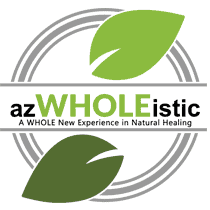
 Phoenix
Phoenix Chandler
Chandler Sun City
Sun City Oils & Tinctures
Oils & Tinctures Gummies & Capsules
Gummies & Capsules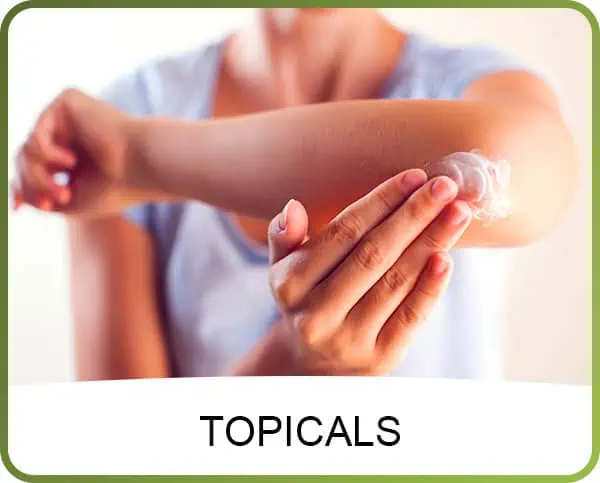 Topicals
Topicals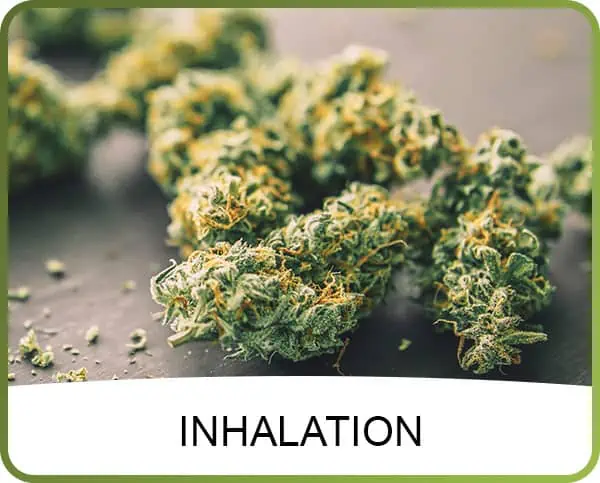 Inhalation
Inhalation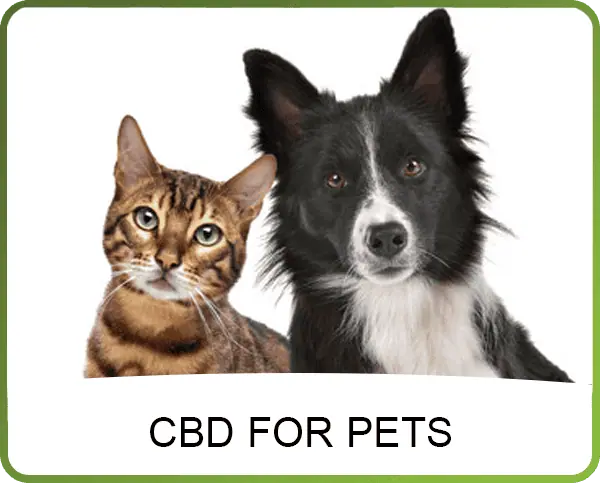 CBD For Pets
CBD For Pets
